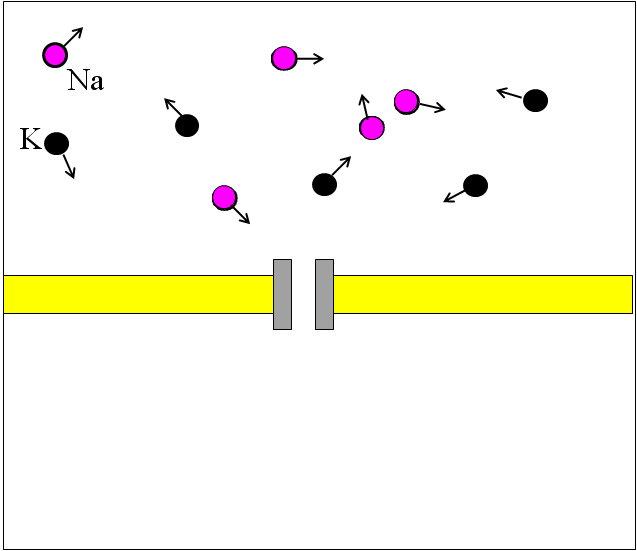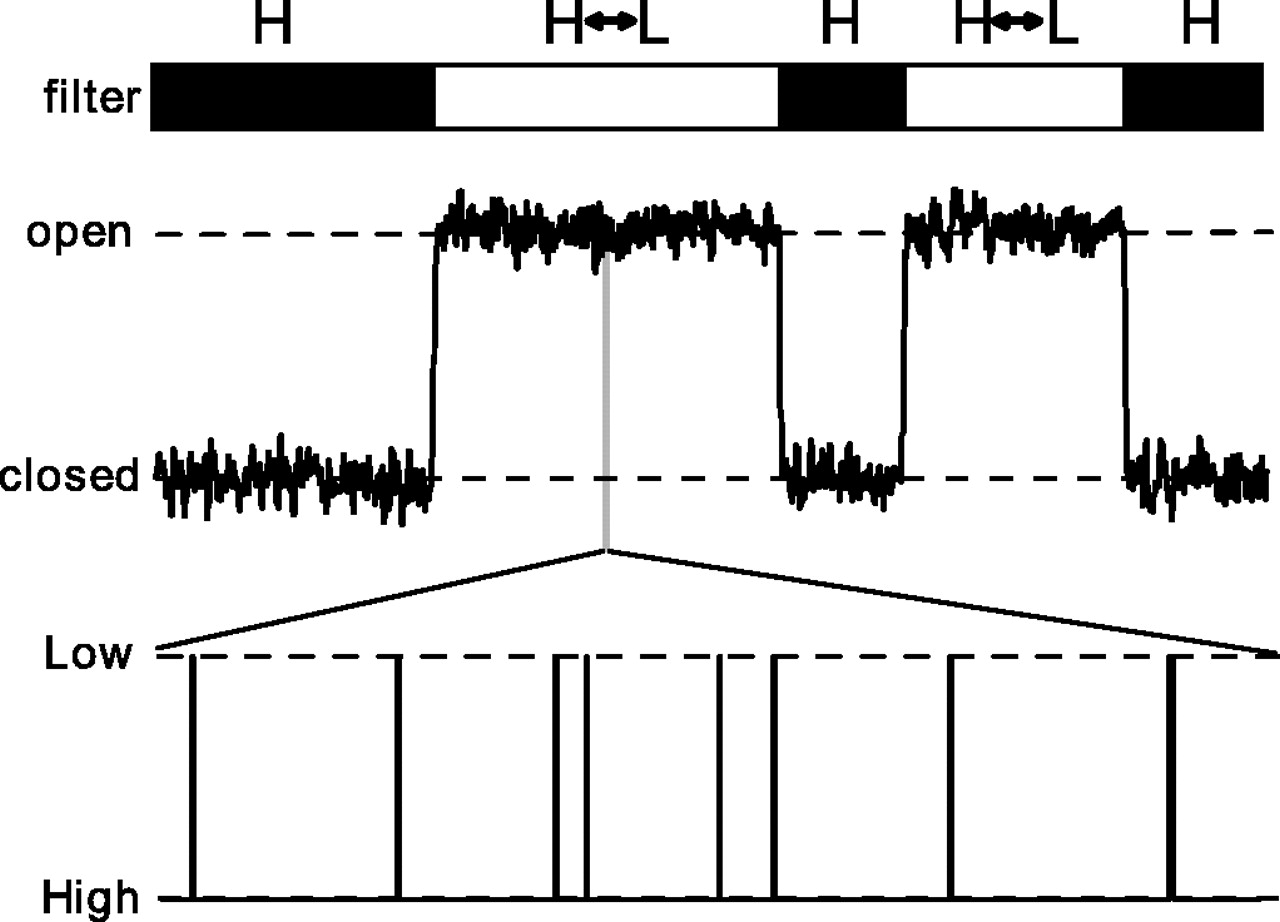
|
| Many channels display subconductance levels: |
 |
|
This suggests a strong coupling between 'gating' and permeation : "The permeability structure is dynamic and forms the structural basis for the open/close mechanism" ( VanDongen, 1992 page 438). We have studied these 'sublevels' in the K channel Kv2.1 (drk1): Chapman et al 1997, 2001, 2005, 2006. The results obtained prompted us to propose that the selectivity filter is the gate The main reasons supporting this idea are outlined below: |
 |
| Structure of the KcsA selectivity filter : |
 |
|
In this paradigm, the selectivity filter exists in one of two 2 affinity states: Low affinity: No ion selectivity - High permeation rate: channel is open High affinity: K selective - No permeation: channel is closed |
|
|
| Monte Carlo simulations of an affinity-switching selectivity filter |
 |
| Channel Gating and Affinity Switching. |
 |
| A short segment of a single channel recording is shown in which the channel visits the open state twice. The bar above the current trace indicates the behavior of the selectivity filter, which is either locked in the high-affinity state H (filled bars), or it stochastically alternates between the high (H)- and low (L)-affinity states (open bars). Bottom panel: The diagram shows the behavior of the filter during an open interval at an expanded time scale: even when the channel is fully open, the filter spends most of its time in the high-affinity state. |